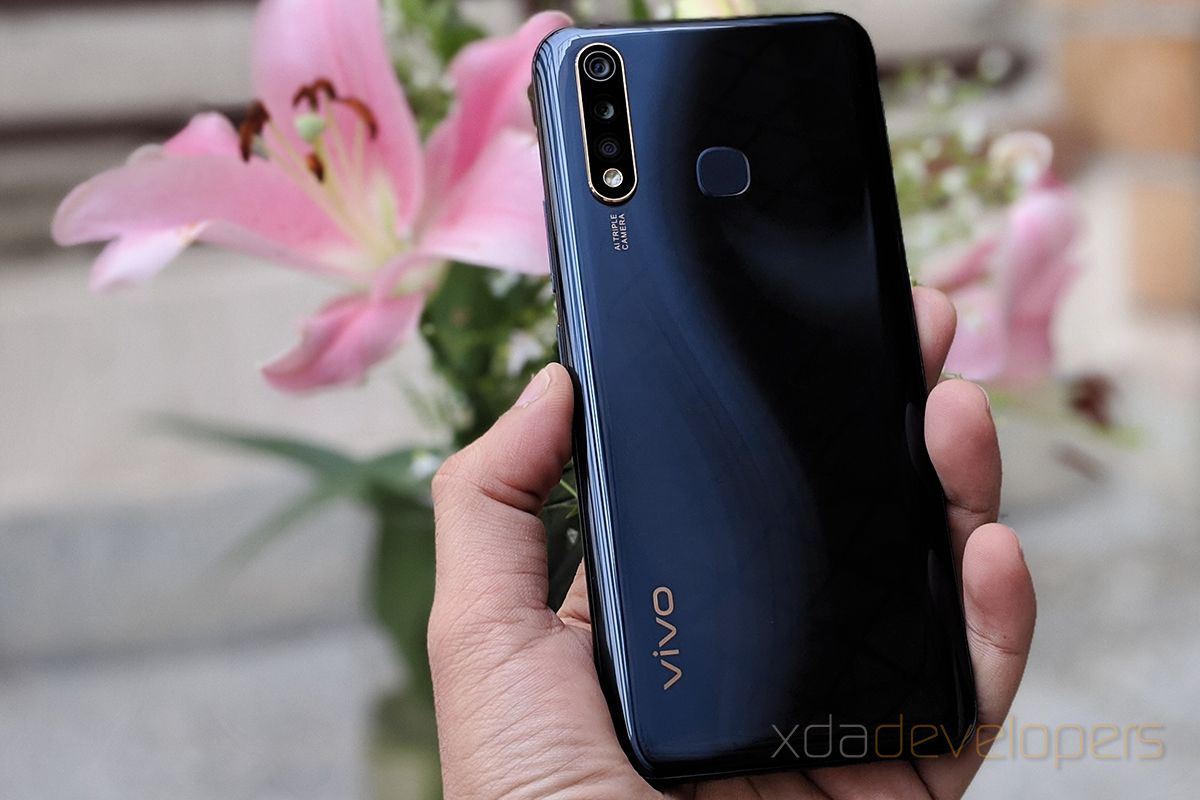Vivo is the third-largest smartphone brand in India by the number of shipments. Offline sales make up for the majority of Vivo’s sale in India and but lately, they have been trying to woo the consumers who prefer to buy online. In September, Vivo announced the U10, their first online-only smartphone in India and its primary virtue was the 5,000mAh battery. The company has today announced the second product in this series – the Vivo U20 – with a host of exciting features for attractive pricing and primarily targetted at the youth. The phone is already available in China as the Vivo U3.
The Vivo U20 is swanked with a radiant pattern on the back that is easily reminiscent of the Realme 3 Pro’s race-track inspired design. Vivo, however, goes a step further and uses golden accents around the triple rear camera and its logo on the back, which is laminated with a layer of plastic. On the front, there’s a 6.53-inch Full HD+ LCD display which comes with a Panda MN228 display protection, a Chinese alternative to Gorilla Glass.


In terms of its camera, the triple sensor setup includes a 16MP IMX499 primary sensor, an 8MP wide-angle sensor for 120º field of view, and a 2MP Super Macro sensor. On the front, there’s a 16MP camera for selfies. The rear camera can record 4K videos at 30fps or Full HD videos at 60fps.
Inside, there’s a Qualcomm Snapdragon 675 SoC powering the Vivo U20. There’s an option between 4GB and 6GB of RAM. Meanwhile, 64GB comes are the standard option for the UFS 2.1 storage. The storage can be extended up to an additional 256GB with a micro SD card.
The Vivo U20 carries over the large 5,000mAh battery from the U10 and also gets support for 18W fast charging via a micro USB port at the bottom of the phone. Additionally, the phone supports dual-band Wi-Fi and Bluetooth 5.0.
Vivo U20 Specifications
| Specifications |
Vivo U20 |
| Dimensions & Weight |
- 162.15 x 76.47 x 8.89 mm
- 193g
|
| Display |
- 6.53-inch IPS LCD
- 1080 x 2340 px
- Panda MN228 display protection
|
| SoC |
- Qualcomm Snapdragon 675
- Adreno 612 GPU
|
| RAM |
4GB/6GB |
| Storage |
64GB UFS 2.1
Dedicated microSD slot |
| Battery |
5,000mAh with 18W fast charging |
| Fingerprint Sensor |
Rear-mounted fingerprint |
| Rear Camera |
- 16MP primary sensor, f/1.78
- 8MP 120° wide-angle sensor, f/2.2
- 2MP Super Macro, f/2.4
- 4K video recording at 30fps
|
| Front Camera |
|
| Android Version |
FunTouch OS 9 based on Android 9 Pie |
| Colors |
Racing Black, Blaze Blue |
Price & Availability
The Vivo U20 will be available in India starting November 28th, 2019 via Amazon India and Vivo’s online store. The 4GB RAM variant is priced at ₹10,990 whereas the 6GB variant will come for ₹11,990. For the first few weeks of the sale, the Vivo U20 will get a discount of ₹1,000 on prepaid orders over both the channels.


Vivo U20 color options
Interestingly, Vivo announced the Y19 a couple of days ago, which is the same phone as the U20 but with a MediaTek Helio P65 SoC in place of the Snapdragon 675. Since the Y19 is not an online-only device, it is priced much higher with its 4GB/128GB variant selling for ₹13,990.
The post Vivo targets India’s online buyers with U20’s Snadragon 675, 5000mAh battery, 18W charging at ₹10,990 (~$150) appeared first on xda-developers.
from xda-developers https://ift.tt/2XBE01T
via
IFTTT













